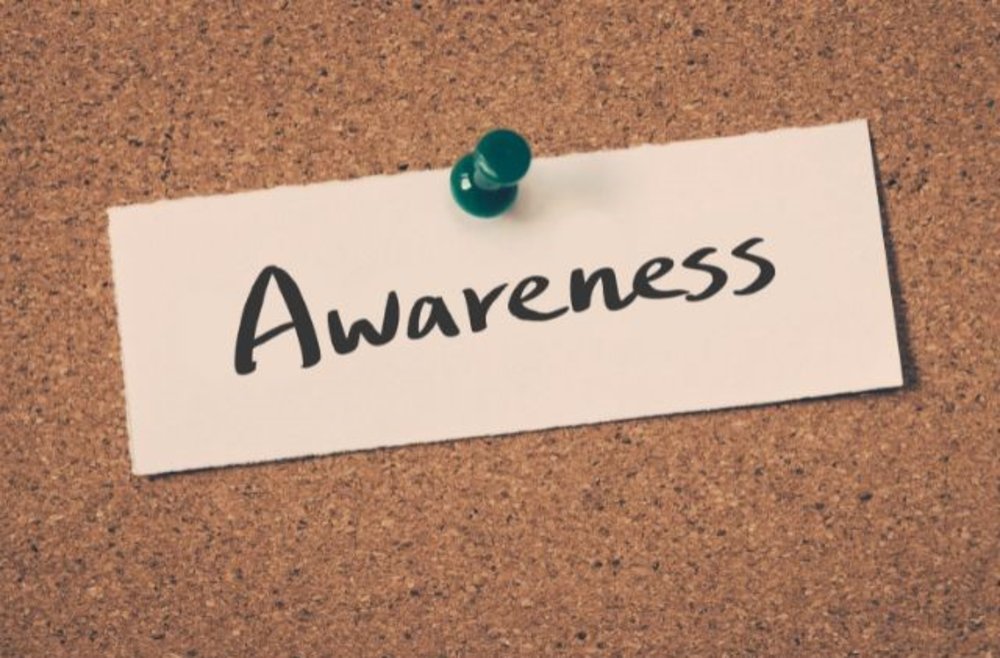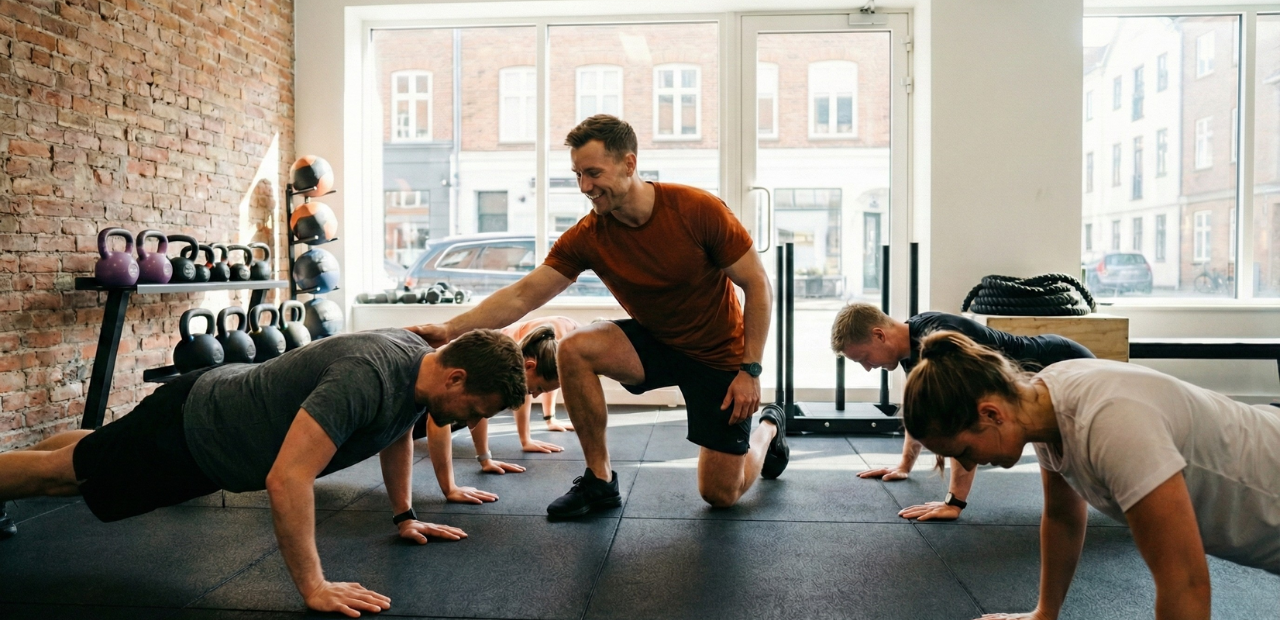Knowing how gym members feel and what they think from the first time they hear about your gym to when they become regular is important.
It’s like following their story from the moment they notice your gym until they’re big fans who tell everyone how awesome it is.
This is where the AIDA model helps. The AIDA model is like a guide to help understand this story. It’s like the chapters of a book:
- A is for Awareness: When people first see or hear about your gym.
- I is for Interest: When they start thinking, “Hmm, this gym looks good.”
- D is for Desire: When they want to join because they’ve seen all the cool things you offer.
- A is for Action: When they sign up and start working out.
For a gym to beat the competition and do well, it needs to make sure members have a great experience at every one of these stages, just as the most successful fitness clubs do.
In this article, we’ll go in-depth about the gym customer journey and how you can use your understanding of the AIDA model to grow your business.
What is a Customer Journey?

A customer journey refers to how someone becomes a gym member and their experiences along the way which can be effectively visualized through customer journey maps. The customer journey map begins when they first start thinking about joining a gym and continues as they learn more, decide to join, and then keep coming back.
Here’s how it works:
- Starting Point: Picture someone realizing they want to get fit or find a place to work out. That’s when they start looking around for a gym, or health clubs, to join.
- Learning More: Next, they come across a gym—maybe they see an ad online, pass by one on their way to work, or hear about it from a friend. They get curious and want to know more, like what classes are offered, how much it costs, or how far it is from home.
- Making the Choice: If they like what they see, they might drop in for a visit or sign up for a trial; this decision-making process is when they decide if this gym is the right fit for them.
- Becoming a Regular: Once they join, they start going to the gym regularly, getting to know the staff, and maybe even making friends with other members.
- Staying Loyal: If they have a great time, they’ll keep coming back, become a regular face at the gym, and may even start telling their friends about it, helping to build credible relationships within the community.
The idea is that if the gym understands this whole story, they can make sure every part of it is great for the members, making them more likely to join and stay happy.
Why is the Customer Journey Important for Gyms?
The customer’s journey is important for gyms because it’s all about the customer experience the gym offers, from the moment someone first hears about it to the day-to-day interactions they have as a member.
Think about it like this:
First Impressions Matter

When someone first learns about a gym, maybe through a friend or an ad, they start forming an opinion right away.
If the ad is catchy and the sign-up process is easy, they’re more likely to think positively about the gym.
For example, if your gym has an eye-catching sign or a friendly receptionist, it sets a welcoming tone right from the start.
Customized Experiences Lead to Commitment

Different clients have different needs. A busy professional might be looking for 24/7 gym access and quick classes that fit his schedule.
In contrast, a retiree may value community-driven classes and spaces where she can socialize.
Understanding and tailoring the journey for each type of customer can turn them from occasional visitors into committed members.
Becoming Part of the Community

Once they join, every workout, interaction with trainers, and the atmosphere affects how they feel about the gym.
If members are greeted by name and trainers remember their fitness goals, they’ll feel like they belong.
This personal touch can turn a regular gym-goer into a loyal fan.
Staying for the Long Haul

The ongoing experience will determine if members stick around. If the gym listens to feedback and keeps equipment up-to-date, members are likely to stay.
For the business owner, acting on a suggestion, such as adding a new yoga class, means that members feel heard and appreciated, fostering a sense of community.
Spreading the Word

Happy gym members are the best advertisement. If they have a great experience, they’ll tell their friends, family, and coworkers.
For example, if a member brags about the awesome new sauna or the community events at your gym, it’s free promotion.
In the end, if gyms understand and manage customer journeys effectively, they not only gain members but create champions of their brand who help bring in more business. It’s a cycle of satisfaction that keeps on giving.
The AIDA Model Explained
The AIDA model is a blueprint for capturing customers’ attention and guiding them toward making a purchase. It consists of four stages:
- Awareness: The potential member becomes aware of their fitness needs.
- Interest: They express curiosity about how to meet those needs.
- Desire: They develop an emotional connection to the idea of fulfilling this need through your services.
- Action: Finally, they take the step of signing up for a membership.
Let’s go over each of them in detail.
Awareness

In the Awareness phase, potential customers become conscious of your gym. This is where visibility is key.
For example, a busy professional who’s been thinking about improving his health.
He notices a billboard for your gym on his commute, then later sees an ad for it on Facebook.
You’ve used a mix of traditional and digital marketing to ensure your gym appears where potential customers like this are most likely to see it.
At this stage, it’s not about hard selling; it’s about making a memorable introduction and getting your brand name out there.
Interest

Once you’ve captured someone’s attention, the Interest phase is where you nurture the curiosity of prospective clients.
They’ve noticed your gym, but now you need to engage them.
For example, a college student spots your gym’s Instagram post about a student discount and swipes up to learn more, engaging with the brand through social media conversations.
On your website, she finds a blog post about balancing fitness and studies, a virtual tour of the facilities, and a calendar of classes that fit her schedule.
Here, the content is designed to engage this potential customer by providing valuable information that resonates with her situation and interests.
Desire

Moving from a logical interest to an emotional Desire is crucial in the buying process.
This is where potential customers start to feel that what you’re offering can meet their needs and desires.
For instance, A person is looking to lose weight and has been reading the success stories featured on your website.
He’s emotionally moved by a story that mirrors his own struggles with weight.
Your gym then emails him about how joining the community can support his weight loss journey with personalized nutrition and fitness plans.
Now, it’s not just a gym to this person, it’s a gateway to a better, healthier life.
The Desire phase is about making that emotional connection and showcasing the transformative potential of your services.
Action

Finally, the Action stage is where the potential customer decides to purchase or subscribe. Here, you make it as easy as possible for them to say “yes.”
For example, if a client has been impressed by the testimonials and the atmosphere at your gym, but she’s hesitant.
To help her take the final step, you offer a one-week free trial, a fitness consultation, and a no-commitment membership option.
Perhaps she even receives a time-sensitive promotion, prompting her to take immediate action.
This is where a clear call-to-action (CTA), ease of process, and a strong value proposition come together to convert interest into action.
Transition to Post-AIDA: The Member’s Continued Journey
The post-AIDA journey is about nurturing the member’s relationship with the gym to ensure they remain satisfied, engaged, and loyal. This phase is critical because it’s what turns a new member into a long-term advocate for your gym.
Here are the detailed aspects of this continued journey:
Onboarding

This is the process of welcoming new members into the gym and ensuring they know how to get the most out of their membership. It’s more than just a tour of the facilities; it’s an induction into the culture of the gym.
For example, an effective onboarding process might pair the new member with a mentor or assign them to an introductory class where they can learn the ropes without feeling overwhelmed.
It sets the tone for their experience and helps reduce the intimidation factor that can come with joining a new gym.
Engagement & Retention

After members are onboarded, the focus shifts to keeping them engaged. This means offering a variety of classes, updating equipment, soliciting feedback, and creating a community they want to be a part of.
For instance, hosting a monthly challenge can be an engaging way to motivate members to set new goals, and regular social events can help foster community bonds.
Additionally, maintaining communication through newsletters, updates, and feedback forms shows members that the gym cares about their experience and is always looking to improve.
Learn about the best ideas for member engagement and keeping gym clients engaged.
Preventing Cancellations

To keep members, gyms need to watch for signs of disengagement and address them proactively.
For example, if a member who used to come in five days a week now only shows up twice, the gym staff could reach out to see if there are any issues or changes in circumstance that the gym can assist with.
Offering a pause on membership due to travel or life events, or a personalized check-in to reassess fitness goals, can make all the difference in preventing a cancellation.
Find strategies to avoid cancellations here.
Renewal and Upselling
As members approach the end of their membership period, the gym must encourage renewals and, where appropriate, upsell additional services.
This could mean offering a discount on a yearly membership renewal or a special promotional deal that includes personal training sessions.
For example, a gym might recognize a member’s commitment by offering them an exclusive renewal rate, showing appreciation for their loyalty, and incentivizing continued membership.
Conclusion
Understanding the entire customer journey of how a gym member feels and decides from the moment they first hear about the gym until they join – and how they keep coming back – is important.
But it’s more than just getting new members to sign up; it’s about building a connection that turns a new gym member into a lifelong customer.
If a gym or a fitness club owner keeps improving the experience they offer, members are more likely to stick around and even recommend the gym to others




